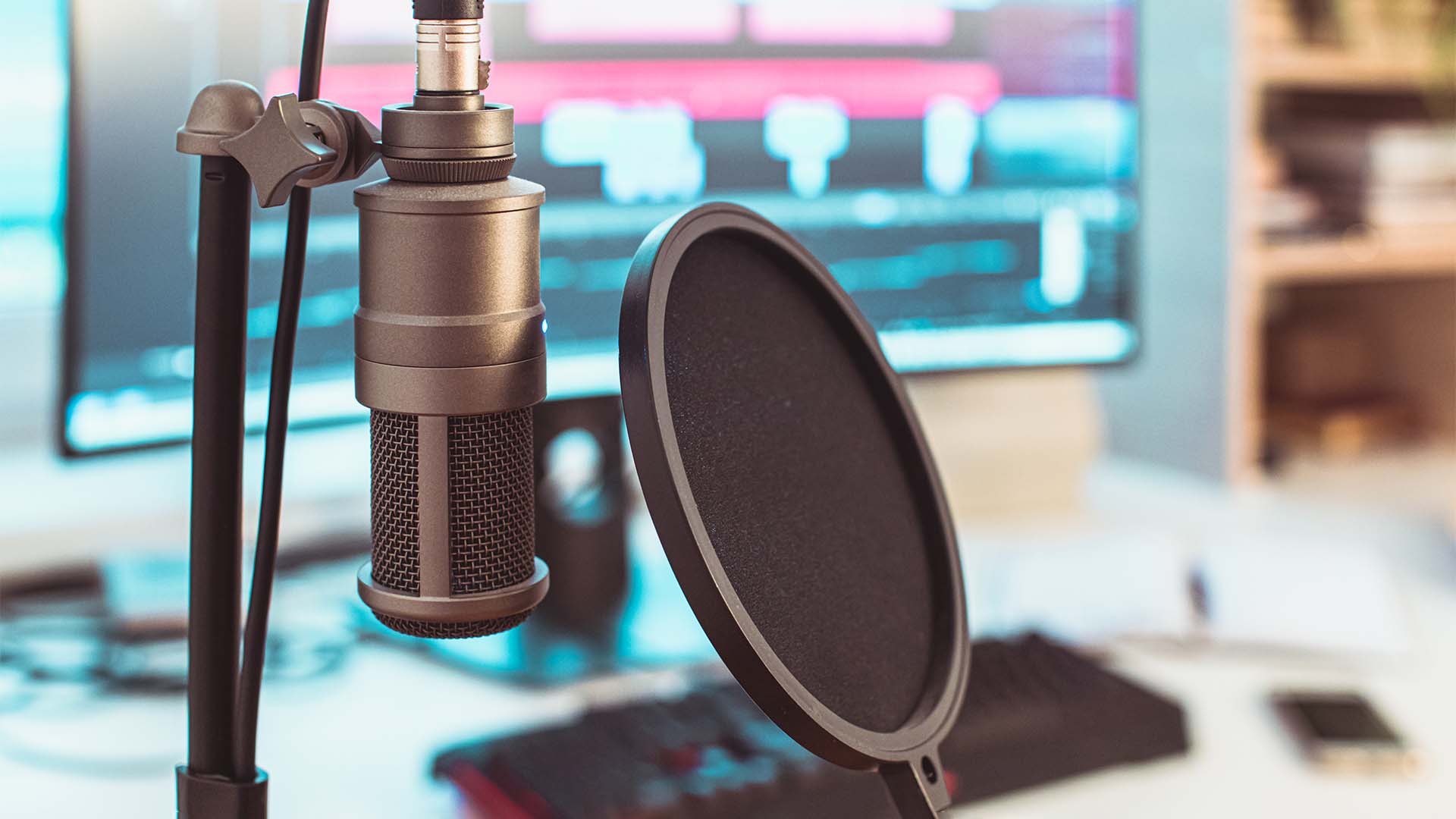
Last time we focussed on the room setup, this time Nigel Cooper delves into the recording gear.
Closed-back headphones
Headphones are another vital piece of kit as your singer will need them for monitoring purposes to hear the backing track while singing. But they need to be closed-back, and quality ones at that, to prevent audio spill leaking out of them and getting picked up by the microphone which would cause a horrible delayed comb-filtering effect. For £100 a pair of Beyerdynamic DT 770 Pro in the 80 ohm version will do the job to perfection. The DT 770 Pro’s encapsulate the ears entirely and are by far the most comfortable cans you’ll ever wear.
They are virtually uncoloured and perfect for mixing too. Yes, you heard that right, mixing. I know a lot of amateur recording engineers will tell you never mix on headphones, but a professional engineer will tell you not only to mix on two different sets of monitors, but with headphones too. Majority of the younger generation listen to their music via headphones so you have to mix for that market. When mixing with headphones the stereo filed is in the centre of your head spreading out to each ear as apposed to being out in front of you so you have to make slight adjustments with automated-pans and what sits where in the stereo field so your final mix sounds good on anything from high end hi-fi, a Sonos speaker, a dodgy shopping mall PA and, yes, headphones and ear buds.
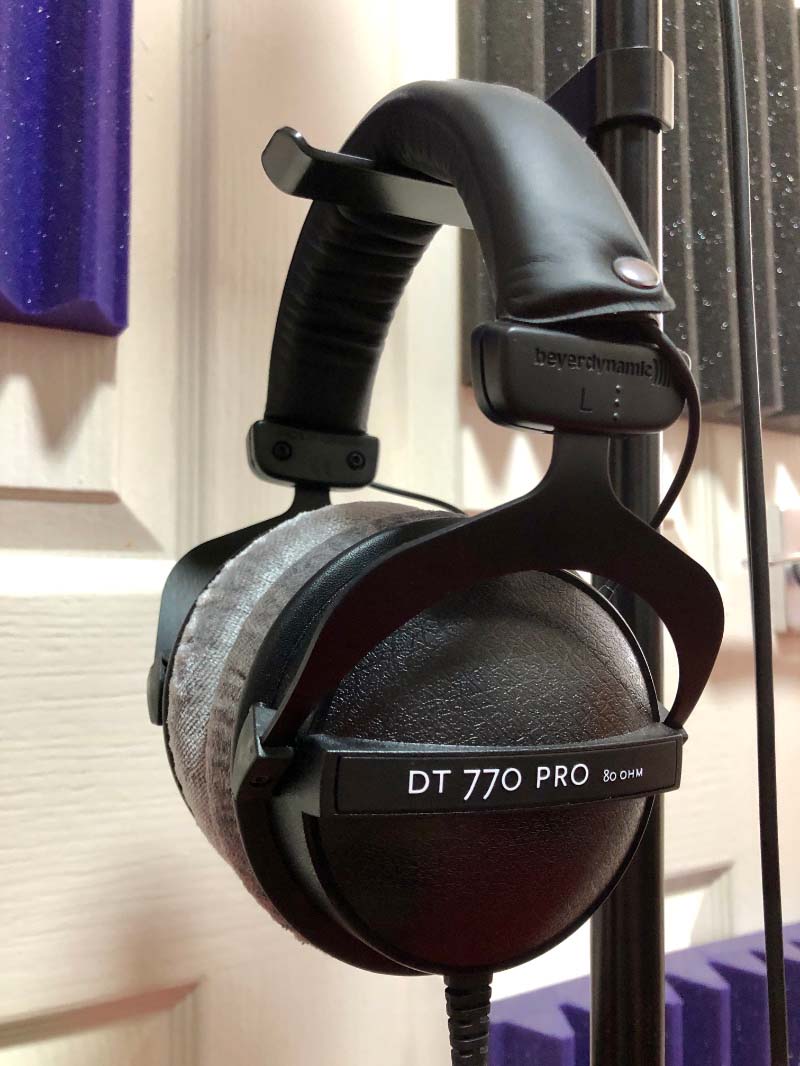
Closed back headphones.
MIDI keyboard controller
Next up we come to the all-important MIDI keyboard controller, which, again, has to be just right as this is the one physical piece of equipment that you’ll be touching more than any other so the keyboard action has to feel and play right, the sliders and pan pots all have to have a nice tactile feel and, most importantly, it has to have all the required controls, finger pads etc and integrate with your computer’s DAW perfectly. I must admit, I struggled with this and I could not get my head around why most MIDI keyboard controller companies build them to the low tacky plastic standards that are akin to a £30 inkjet printer. Most of the ones I tried, even from respectable companies such as Korg and Roland, felt more like a plastic toy you’d expect to find in a 4-year olds playroom than in a professional recording studio.
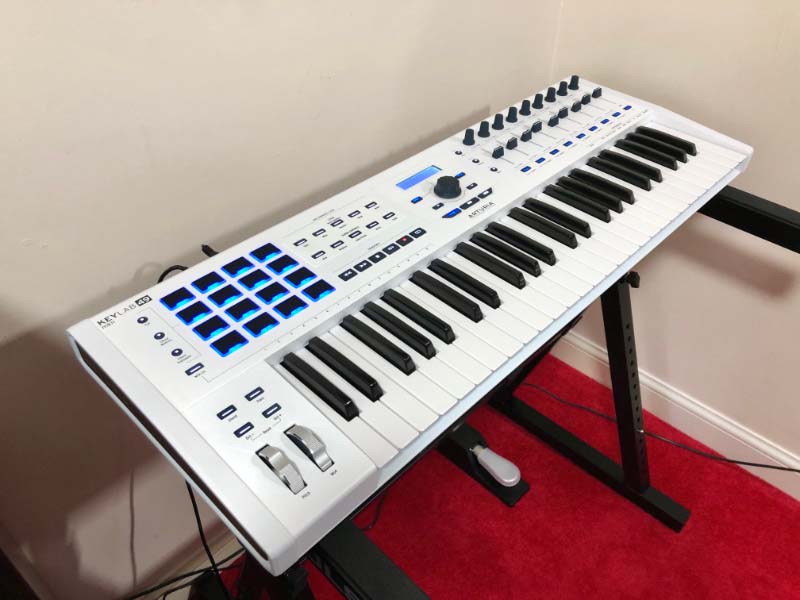
MIDI Keyboard Controller.
But after much research I found one very bright shining star in the MIDI keyboard controller department made by a French company called Arturia, the model I went for is the KeyLab MKII, which comes in a 49, 61 or 88 key versions and boy what an amazing keyboard controller it is too. Well, actually, it’s a MIDI keyboard controller/synthesiser as it comes with a software package called Analogue Lab V which has amazing synth models of most of the classic synthesisers and keyboard of yesteryear such as the: Roland Jupiter 8, Prophet 5, Oberheim OB-Xa, Yamaha CS-80, Hammond B3, to name just a few and these are not just tacky software plug-ins either. Arturia scoured the earth and bought these vintage synths, sometimes more than one of each for consistency purposes. They stripped them down and studied every circuit board, module, processor, chip, diode, and computerised the lot to come up with software emulations that are (again, trust me on this) virtually indistinguishable from the real thing and once in the mix they are 100% indistinguishable, they really are that good!
Microphone
Next comes the all important microphone. These days if you have just £200 to spend on a mic you’re in luck as there are so many amazing studio-grade mics out there. Again, gone are the days when you had to spend £2,300 on a Neumann U87 for decent results, though the U87 is a pretty amazing mic. Fact is most people make the mistake of choosing a mic based on what their favourite artist uses, or what every blogger uses. The Shure SM7b is a fine example. Just because Jacko used an SM7 for the vocal work on his Thriller album does not mean it will be a suitable fit for your voice. Micheal Jackson had a smooth rounded voice so the engineer picked the Shure SM7 off the shelf as it had a rough edge to it’s tonal character, which would help Michael’s vocal presentation cut through the mix better.
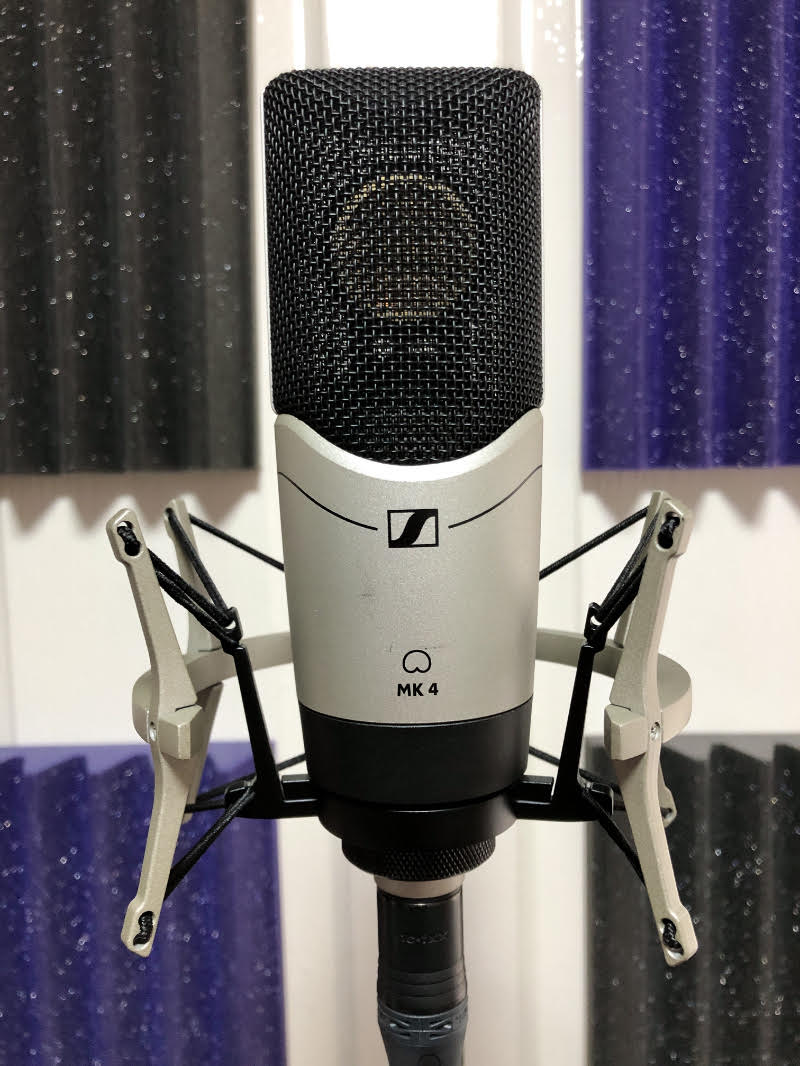
If you have a gritty edgy voice like Kelly Jones from the Stereophonics you’d look at a mic that has the opposite characteristics, one that is rounded, smooth and slightly dark, otherwise if you went for a mic like the Rode NT1 (which is a bit on the bright side) it would sound overly gritty and bright and the vocals would need toning down in post. I personally use two different mics, a condenser and a dynamic, for different applications and most top recording studios will have a cupboard full of mics for different vocal styles and applications. My two mics are the Sennheiser MK4, at £275, which has a bright transparent sound with warm bass if you get in close and it has a good amount of sparkle at the top to make vocals really cut. The other is a dynamic mic, the world famous Electro-Voice RE20 at £475. The RE20 is smoother, darker and more rounded in tone and it has zero proximity effect due to its unique design.
Pop filter
A pop filter is a must to go with your mic, but not one of those budget ones off Amazon that has a layer of nylon stretched across a circular plastic frame, or worse, ‘two’ layers of nylon – yuk. It still amazes me how many recording studios use nylon pop filters, knowing that they cut out some of the high frequencies in the human vocal range. Especially when the Stedman PS101 pop filter does not affect the audio quality at all due to its unique metal stamped design. The Stedman also prevents spittle hitting the mic’s delicate diaphragm (diaphragms and spit do not mix). Diaphragms vibrate microscopically and are sensitive to spittle and moisture so if you have Johnny Rotten gobbing all over your mic during an anti-singing session by the end of it there could be an element of buzzing and distortion entering the mix as the diaphragm stops picking up the vibrations of sounds properly due to being covered in gob. Also, for hygiene reasons you can just run the Stedman under the tap.
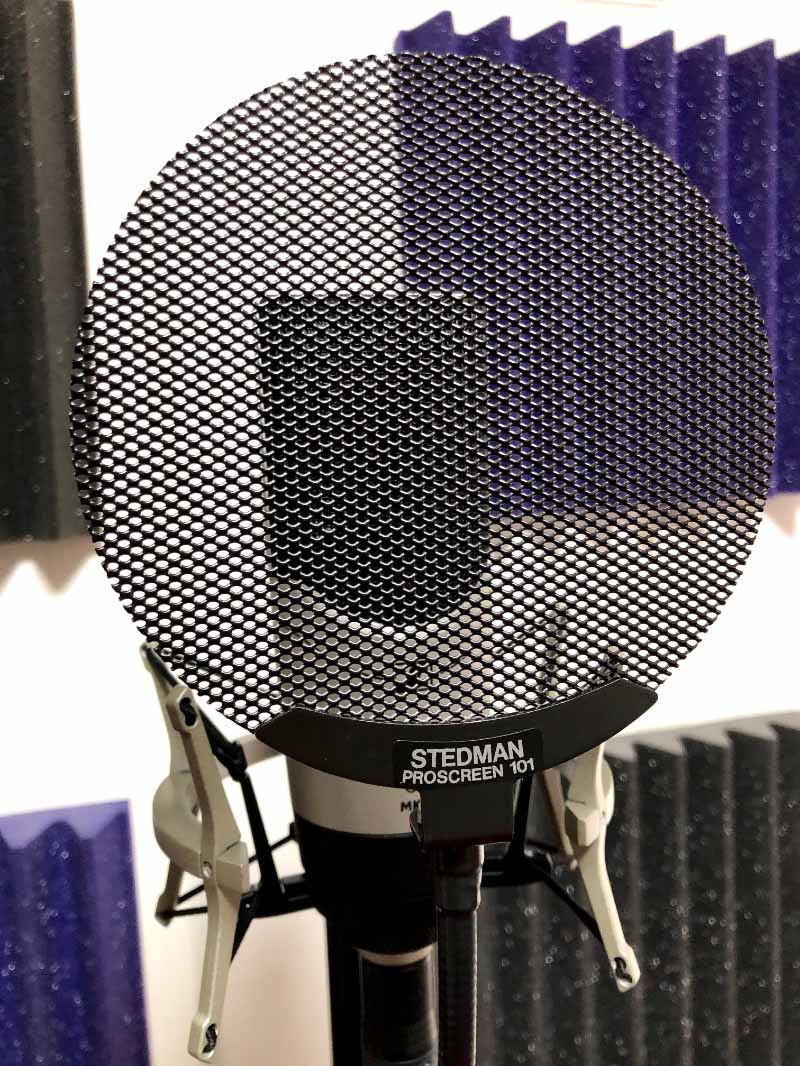
Stedman Pop Filter.
The final accessory I’d advice you get for your mic is a cover, which will protect the diaphragm from the suns rays if it happens to be left in direct sunlight when not in use and a mic cover will retain the colour of the metal over the years as it will prevent sunlight fading it. A Velex-X mic cover is only about £12 so there’s no excuse not to get one.
Plugins
When it comes to software, apart from the DAW, be it Logic, Ableton, or whatever you decide on, there are two essential software plugins I’d recommend – one being more essential than the other. Antares Auto-Tune is one, they offer various packages, but the AutoTune EFX + at $199 would be my recommendation. Antares was the original Auto-Tune and the one used on Cher’s ‘Believe’ back in 1998. Although it’s great for getting slightly out of tune notes back in pitch, most people use it for the ‘Cher’ effect, or the T-Payne effect, that robotic Daft Punk vocal sound when Auto-Tune is cranked up to maximum overdrive. Nothing does it better than the Antares Auto-Tune.
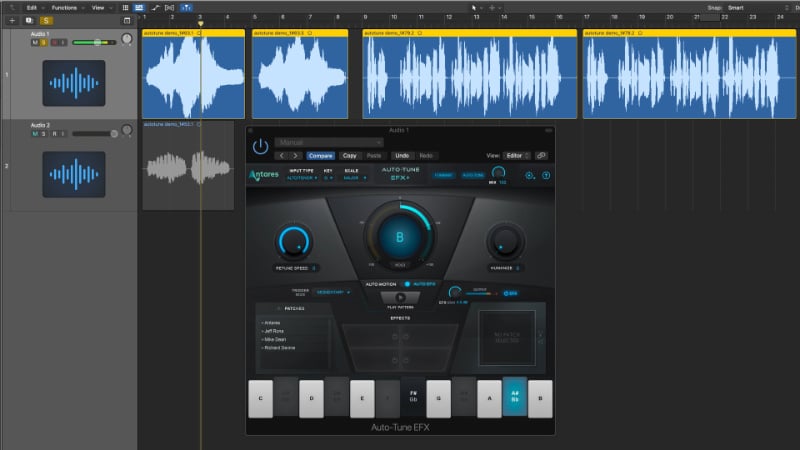
The next piece of critical software required for vocal work is every top recording studio’s best kept secret. Celemony’s Melodyne. Again, there are three offerings, but Melodyne 5 Assistant at $249 is my go to package. Pretty much every commercial song you hear on the radio has had the vocals passed through Melodyne. It’s different to Auto-Tune in that you can adjust each note individually in fractions of a semi-tone as well as adjusting the timing, which is vital as even professional singers can’t always nail the timing, but you can also adjust the formant (mouth shape and throat width), note length, sibilance and so much more. Basically, Melodyne is totally bloody awesome and if you’re a singer, no matter how good you are, Melodyne will put your vocals up there with the commercial releases.
Cables
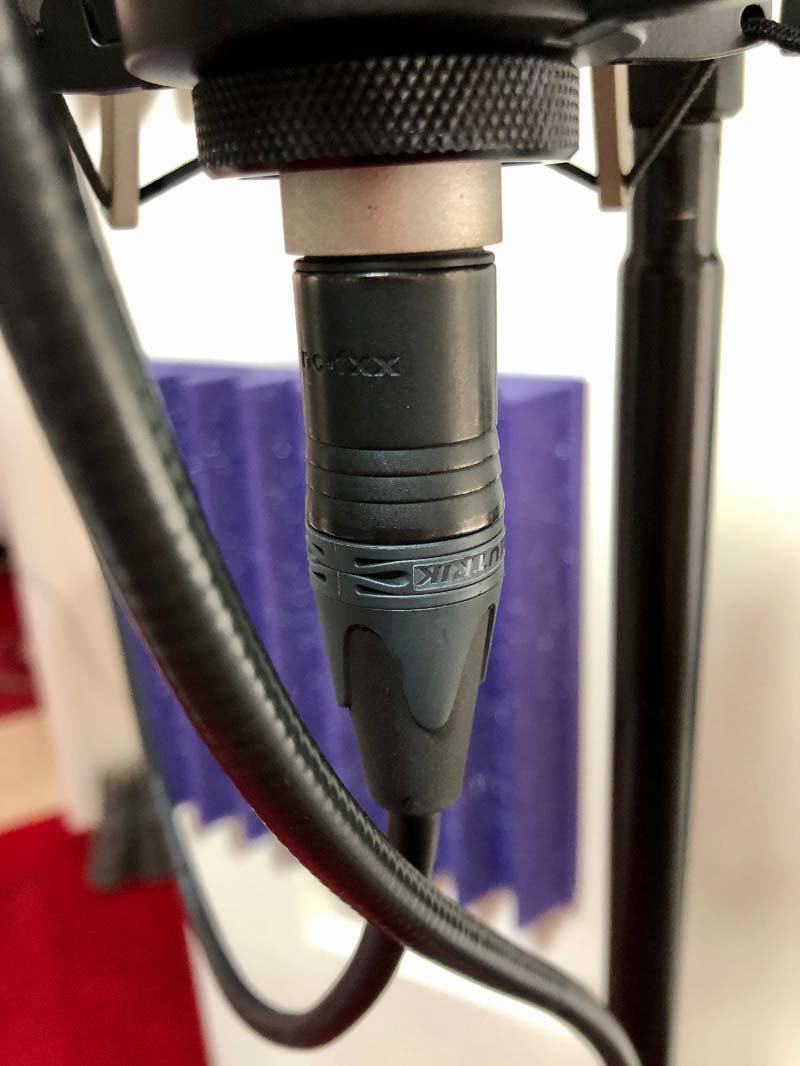
Finally come the cables. I’ll tell you from the get go that, sonically, there is no audio difference between a cheap £8 Amazon Basics XLR cable and a £50 Mogami one, none whatsoever. With decent XLR and Guitar cables what you’re paying for is an improved shielding against radio and electrical interference and higher quality cable materials and the XLR and Jack connectors are made out of superior metals. If your cable runs alongside a phone charger, for example, there is every chance that a budget XLR cable will pick up some electrical interference from it, which will often find its way into the recording. Also, I’ve spoken to Neumann and Sennheiser engineers several times over the years and they quite often get an expensive mic that’s been sent in for repair because part of a cheap metal XLR connector had snapped off inside the mic when the engineer was simply unplugging it. So I use Mogami and Klotz XLR and Jack cables in my home recording studio.
Ok, so these two articles form a brief overview of the equipment at least. Click on the YouTube link below for the full 3 hr 20 min tutorial video that goes into every detail.

Comments